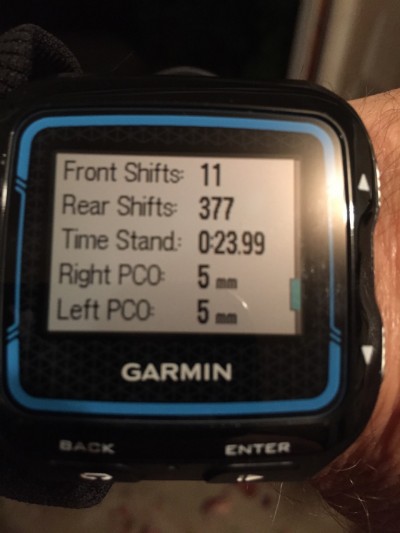Greetings, fellow triathletes! It’s Bill Sanders here. I will be your host for the upcoming Garmin Gadgets mentoring session, which is coming up on February 14 (yes, Valentine’s Day!) You can find out about – and RSVP for – that event by clicking here.
I am sitting down and putting together some material based on ideas that have been rolling around in my head for awhile. These come from experiences I’ve had, and solutions I’ve found, as well as from questions that others have brought up over the last couple of years.
 Now, I’d like to ask you to tell us what you need to know about, so I hereby invoke am invoking an Ask Mentoring Anything! Please submit comments below and let us know what you would like to hear about. We’ll do our best to see if we can get that covered.
Now, I’d like to ask you to tell us what you need to know about, so I hereby invoke am invoking an Ask Mentoring Anything! Please submit comments below and let us know what you would like to hear about. We’ll do our best to see if we can get that covered.
A reminder (and you can read more in the Event listing), the focus of this session is going to be about the widgets and gadgets, what they do, what kind of data they give you (realtime and for later analysis), how to make them talk to each other, and get your data from the gadgets to the various apps and programs for storage and analysis. What we will NOT go into detail on is how to use the data to improve your performance. Why? That will be the topic of other mentoring sessions and presentations, primarily from our sponsor coaches from TriSmart, IronBrick, and Evolve!
The comments box is below … and … go! See you on Valentine’s Day!






For fun, here’s an example of the reversed track distances from a session last year. The #2 intervals were run “backwards” on the track. I used the paint lines on the track, always run in same lane.
#-distance-time-pace-garmin distance
#1 1200 5:31 6:33 .84 mi
#1 600 2:38 6:08 .43 mi
#2 1200 5:16 6:57 .76 mi
#2 600 2:28 6:38 .37 mi
#3 1200 5:15 6:21 .83 mi
#3 600 2:27 5:56 .41mi
I’d like to figure this out so when I do races I pick loop courses that go in the most favorable direction for me. LOL!
Interesting! It certainly is a consistent trend. And it is “blind” to the fact that you’re running on a measured track. Satellite geometry that leads to something called GDOP (Geometric Dilution of Position) will be different every time you run (the satellites’ orbits are not synced to a 24 hour period), so that’s not it… Since you said it does this consistently. Were you wearing a footpod?
More data for ya Bill. I’ve been eager to test our theory that the Garmin is detecting the difference in being on the “inner track arm” and the “outer track arm”, clockwise and counter-clockwise, respectively. Intervals #1 were run counter-clockwise/normal/outer arm. Intervals #2 were run clockwise/backwards/inner arm. I did a rest lap between intervals, and was careful to run a few meters extra at the end of the rest before starting the next interval, so the Garmin didn’t get messed up by a switchback effect.
#1 1600 1.06 mile
#2 1600 0.99 mile, a difference of 0.0175 mile per lap, or 28 meters
#1 800 0.53 mile
#2 800 0.50 mile, a difference of .015 mile per lap, or 24 meters
#1 400 0.27 mile
#2 400 0.25 mile, a difference of .02 mile per lap, or 32 meters
I think the mile per lap values are not significantly different. Google tells me that lane 2 is 7 meter longer than lane 1, and my shoulders are roughly 15″ apart when running – a distance less than the lane widths.
Thoughts?
I have a 910 – the pool swims are a constant challenge to get correct distance. The device regularly gives me an extra 25 yards on a lap. I have to mark a lap each time so that I can at least look back at the data and count the number of laps to get my actual distance. While I’m swimming, I just have to guess at how far I’ve gone.
Hi, Lori,
Everyone has challenges at some time with the lap counting, and it’s one of the things we’ll talk about a the session, as understanding how the thing works “helps you help it”, so to speak.
Do you mean that, if you swim are in a 25 yard pool, you swim down and back, and it tells you 75 yards? Or do you mean, when you finish your entire session, say 1900 yards, it tells you 1925?
I know that what I finally did was use the lap button to start and stop each interval. In other words, I rely on it to detect my turns, but I tell it when I started and stopped swimming the interval. For example, if swimming 3×100, I would do this:
(this assumes I already started with warmups etc)
Push Lap button, Start swimming
100 yards (2 laps or 4 lengths) later, hit lap button to tell it that interval is over
rest
The for the next interval: hit lap button, start swimming, etc.
(3 times total)
The watch is smart enough to recognize the difference between a swim interval and a rest interval and they will show up in the summaries and Garmin Connect as such.
Don’t know if that helps. I may be practicing with both watches in the pool this weekend before the session! 😉
Yes – every so often I get 75 yards on a 50 yard lap. It’s not every time, and my swimming has gotten smooth enough that I tend to not have moments where I stop to cough out water or something mid-length. (I understand that any variance in my swim pattern will cause it to trigger a new length.) So, for a swim that showed on my watch as being 1800 yards, I only actually had 1700 yards based on the method of using the lap button as you mentioned below. By using the lap button, I can get home and check the number of laps to see what I’ve done, but during the swim, it’s a little bit of a guessing game, as I tend to forget what the watch displayed the last time I looked at it.
How do I calibrate my power meter (Quarq) with the 920XT? The 910 would automatically ask as soon as you moved the pedal. I cannot find it on the 920.
Terri – thanks for specifying which power meter you have, that helps.
Try this:
Spin the pedal to wake up the power meter
“…” button over to the “Menu” screen
-> “Settings”
-> “Sensors and accessories”
Scroll down to your power meter (should say “PWR – a number” unless you already gave it a name, then it would be “PWR – the name you gave it”
-> in those power meter settings you should find “Calibrate” and can use that to manually tell it to calibrate.
Notes:
(1) In the settings for your power meter, you may find other options (such as setting crank length). See if there may be one for setting it to prompt you each time.
(2) On the Garmin power meter and the 920, the automatic calibrate prompt (like we had on the 910) only comes up when the power meter thinks it needs calibrating, such as after the batteries are changed. Possibly the Quarq may do the same now. You may need to check to see if you have the latest software in the Quarq. If so, then it is best of both worlds – you can do it manually whenever you want with a few button pushes, but otherwise it will bother you only when it needs it.
Hope that helps!
Bill
What setting on the 910xt watch needs to be set to in order to autodetect the mph from the satellite of the wheel sensor?
-Peter G
Hi, Peter,
Are you asking, how do you tell it whether you want measure and display speed from the wheel (speed) sensor versus using the GPS-derived speed?
One of the good things about the later software in the watches is that it looks for what is available and use the best available data. For example, if you are outside riding and it has both the GPS and the speed sensor, it will use GPS for distance and the speed sensor for speed. In other words, in general, you just let it figure it out and just ride!
I will look to see how that can be overridden.
Another example is cadence. I have both a pedal-based power meter and the combined cadence/speed sensor. Both of those provide cadence. It picks cadence from the power meter (possible so it will be “perfectly” in sync with the power data, but that’s just a guess). If the power meter drops out (that used to happen before they updated the firmware), then after a couple of seconds it would start using the cadence/speed sensor.
Older devices you have to “help out”. For example, my Edge 510, if I’m inside on the trainer I have to tell it to shut the GPS off.
Bill, why does my Garmin give different distances when I run the track clockwise vs counterclockwise? (really, it does this!)
tj
Hmmm. Indoors or outdoors? How big is the difference?
My wife hypothesized that perhaps it’s the Coriollis Effect, and we should all take a trip to Australia and see if it works the other way!